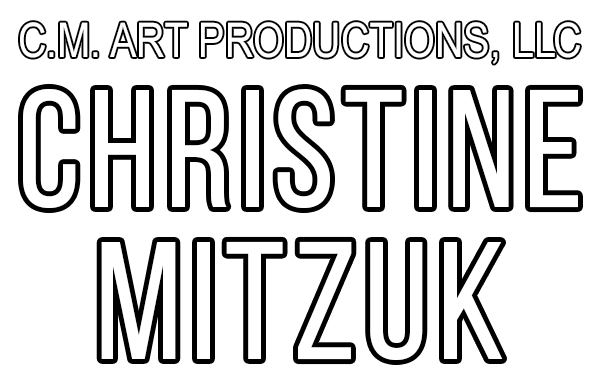
The idea is have a dominant color for each board. When mixing, the goal is to change the main color just enough so you can tell what color was mixed with it, but not so much that you can’t tell what the dominant color is anymore.
The glove is Nitrile not Latex. Nitrile is supposed to be better rated for dealing with solvents. I use odorless mineral spirits to clean up my palette and tools.
The completed board in the upper right is on loan from Cyd Wicker so I’d have a better idea of what these things might look like.
Several weeks back I posted a bit about mixing the Richard Schmid color boards. Here are a few more pointers.
- Instead of using Matte Medium as surface prep for the canvas board, use Matte Varnish (I’ve been using Liquitex). Using the Matte Varnish was a recommendation from someone else. To see the difference for myself I coated one board with the Matte Medium and one with Matte Varnish. The varnish prevents sinking in much better than the Matte Medium. For this exercise I think it’ll be just fine but I don’t recommend laying down coat of varnish for an oil painting.
- I’m working left to right because I’m right handed. I suspect if you’re left handed, working right to left would be easier (less opportunity to drag your hand through paint).
- I broke a palette knife. The smallish diamond shaped one at the bottom of this photo. I was applying too much pressure through my arm to incorporate the paint. The longer palette knife is working much better. The flexibility of the blade does most of the work of mixing. I still use a smallish diamond shaped palette knife to apply the mixtures to the squares.

- Much less paint is needed than you think, but that varies slightly from paint to paint. Some have MUCH stronger pigment strength than others.
- When mixing, first mix the two colors. Next test a tiny little bit with some white to see if the balance of color looks good (if the parent color looks like it’s affected by the added color but not overpowered). Then mix the in between values. Test a little of each on the board. Adjust as necessary. Ideally each value should seem like it could be an even mixture of its two neighboring values.
- Always wipe down the mixing area with a bit of solvent in between mixing each strip of color/value.
- Don’t go for perfection. I’ve decided that I give myself 2 attempts at mixing the color and 7 values. Then I move on. If the color mix and values of a particular string of squares still doesn’t look “right” when I’m done with the board, then I’ll scrape that string off and try again. Sometimes having the other color/value strings mixed helps in determining the balance for the one that I was struggling with.
- I end up with some excess paint every time (I’m hoping to better gauge the amount of paint I need as I go). I tried storing it in a container but there was too much air and the paint dried out. Now I’m storing the excess in a small resealable plastic snack bag (like Ziploc). I use the long palette knife to scrape down the palette and put it in the bag. So far it’s all staying juicy. I’m hoping to have an interesting neutral when I’m done that I could use for value studies or something. We’ll see.
